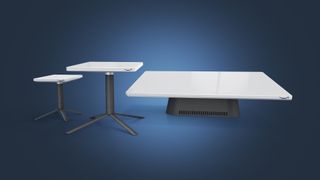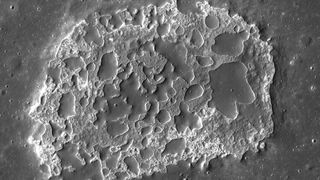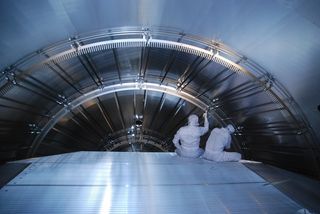Rahul Rao is a graduate of New York University's SHERP and a freelance science writer, regularly covering physics, space, and infrastructure. His work has appeared in Gizmodo, Popular Science, Inverse, IEEE Spectrum, and Continuum. He enjoys riding trains for fun, and he has seen every surviving episode of Doctor Who. He holds a masters degree in science writing from New York University's Science, Health and Environmental Reporting Program (SHERP) and earned a bachelors degree from Vanderbilt University, where he studied English and physics.
Latest articles by Rahul Rao

Amazon's Kuiper satellite constellation will use these sleek antennas to serve you internet
By Rahul Rao published
Amazon has revealed three terminals that customers might use to link up with Project Kuiper, the company's planned satellite internet program.

Equinox on March 20 means more stunning auroras are coming. Here's why
By Rahul Rao published
Aurora hunters claim that, to look to the night sky in search of these beautiful displays, the dates around the equinoxes are the best.

This Asteroid Launcher simulator lets you destroy your hometown — or anywhere else
By Rahul Rao published
Asteroid Launcher, a new web app that gives asteroid impact fanatics a shot at answering some of their questions on what an asteroid crash would be like.

New space arms race could hinder exploration efforts
By Rahul Rao published
The growing weaponization of space poses a threat to human spaceflight in multiple ways, experts warn.

Here's how scientists spotted a 9th target for NASA's Lucy asteroid mission
By Rahul Rao published
Thanks to 26 teams of observers, spotting a star blink out showed that asteroid Polymele has a moon.

The moon's strange warm pits may be the most pleasant place for astronauts
By Rahul Rao published
The moon's surface is pockmarked with hundreds of little pits, each about the size of a large building, and it may not be just the pits' size that would feel familiar to an astronaut.

'Hot robots' may be necessary for future nuclear space missions
By Rahul Rao published
If nuclear-powered spaceflight is ever realized, there will be a need for new types of robots to perform dangerous maintenance tasks.

How the James Webb Space Telescope works in pictures
By Rahul Rao published
The James Webb Space Telescope, also known as Webb or JWST, is a high-capability space observatory designed to revolutionize astronomy.

Hubble Space Telescope shows 5,000 ancient galaxies sparkling like confetti
By Rahul Rao published
Thousands of distant galaxies in different shapes and sizes glow in infrared light in a newly released image from the Hubble Space Telescope.

NASA's Lucy mission adds 9th asteroid to its list of attractions
By Rahul Rao published
NASA's Lucy mission has gained a new destination: a tiny asteroid that's orbiting one of its original target asteroids.

Stellar pair may have formed when wandering star stumbled too close to another
By Rahul Rao published
Astronomers found a binary star system that may have formed when a wandering star fell into the gravity of its partner.

A potential new meteor shower from shattered comet has scientists excited
By Rahul Rao published
This weekend, Earthlings might be treated to the sight of a new meteor shower. Astronomers certainly hope it happens.

Future moon astronauts using water ice may rely on ancient lunar volcanoes
By Rahul Rao published
Volcanoes erupting on the moon billions of years ago may have created a layer of ice under the lunar surface, a new study suggests.

Why so much solar activity? Sun may be outpacing predictions.
By Rahul Rao published
It's no coincidence that the headlines have been full of solar flares and storms: Solar cycle 25, as astronomers call it, is now well under way.

Icy Europa's mysterious double ridges may hint at hidden pockets of water
By Rahul Rao published
A ridge etched into the ice sheet of Greenland provides an unexpected hint that plentiful pockets of water may be trapped just underneath the surface of Jupiter's ice-covered moon Europa.

Gamma-ray telescopes may help scientists catch more gravitational waves
By Rahul Rao published
Telescopes that observe the universe in the most energetic form of light may help scientists detect the "fingerprints" of gravitational waves, new research reveals.

Alien planet with 3 stars is actually a star itself, scientists determine
By Rahul Rao published
Finding alien worlds in distant solar systems is a delicate task.

Hubble Space Telescope spots extreme weather on strange alien worlds
By Rahul Rao published
Since astronomers began finding exoplanets in the 1990s, they've uncovered a lot of hot Jupiters, and now NASA's most venerable telescope is playing meteorologist.

High school student scouring gravitational wave data makes neutron star discovery
By Rahul Rao published
Around the world, astrophysicists are poring over the blips of gravitational waves that ripple through Earth when distant black holes or neutron stars collide. Most don't also attend high school.

Parts of the Milky Way are much older than thought, study reveals
By Rahul Rao published
The Milky Way's thick disk is 2 billion years older than astronomers previously thought and likely formed barely 800 million years after the Big Bang.

Small stellar corpse shoots antimatter beam trillions of miles into deep space
By Rahul Rao published
PSR J2030+4415's 40-trillion-mile-long beam could explain why scientists see certain strange particles on Earth.

New quantum gravity sensor could someday peel away the surfaces of other worlds
By Rahul Rao published
To find features like groundwater under Earth's surface — or under the surface of another world — scientists can sense the subtle marks those features leave in the planet's gravitational field.

Is our universe a holographic projection? Scientists are using black holes and quantum computing to find out.
By Rahul Rao published
Scientists are using quantum computing to understand what's inside a black hole and test if our universe is a holographic projection.

Avoiding satellite collisions: NOAA unveils prototype warning system
By Rahul Rao published
The prototype system, developed by the U.S. National Oceanic and Atmospheric Administration, is designed to alert operators when their spacecraft may be on a collision course with another object.

'Ghost particle' coming into focus: Scientists put upper limit on mass of neutrinos
By Rahul Rao published
Neutrinos are so small that scientists once thought they had no mass at all. Neutrinos do have mass, however, and physicists have now put a new upper limit on it: 0.8 electronvolts.
Breaking space news, the latest updates on rocket launches, skywatching events and more!

